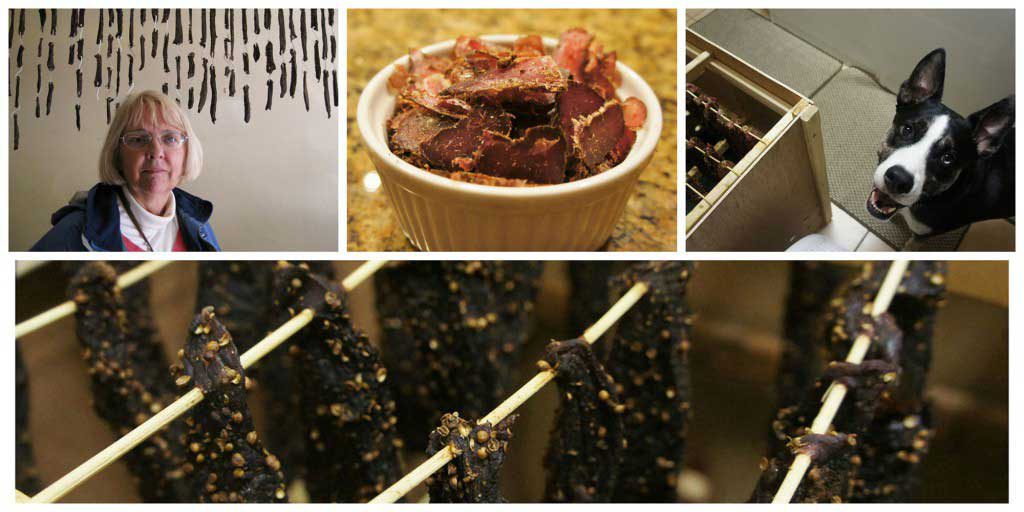If you haven’t gathered by now, I’m married to a South African. And like any good South African, he loves his meats. See Exhibit A, the picture of my husband and his good friend Clinton at a Super Spar in Port Elizabeth. Notice the slogan behind them: “Meat: Say it like you mean it.”
A South African delicacy, biltong is one of my husband’s favorite snacks. This cured meat can be made from a variety of game, including kudu, sprinkbok, ostrich and eland; however, due to customs regulations, biltong cannot be shipped into the United States from South Africa. My husband very much needs his biltong fix, and so he has perfected his biltong-making with this simple recipe.

Here’s what you’ll need.
8 lbs London broil
1 cup biltong spices
1 cup vinegar
Here in the States, the variety of game meats isn’t as readily available as it is in South Africa, so our biltong is made with beef. (I’m curious to try venison but haven’t yet had the chance.) My husband typically uses London broil; however, other cuts of meat work well also (the fattier the better). Catching a deal at the grocery store is always a plus.
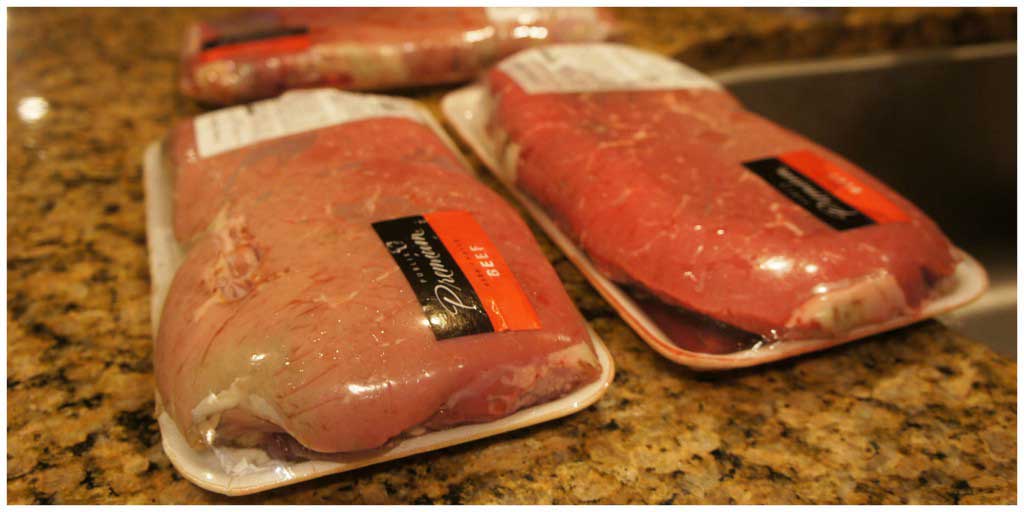
First, cut the meat along the grain into 1-inch thick strips. Cutting with the grain helps aid in the curing process and will also make slicing easier once the meat has dried enough to eat.
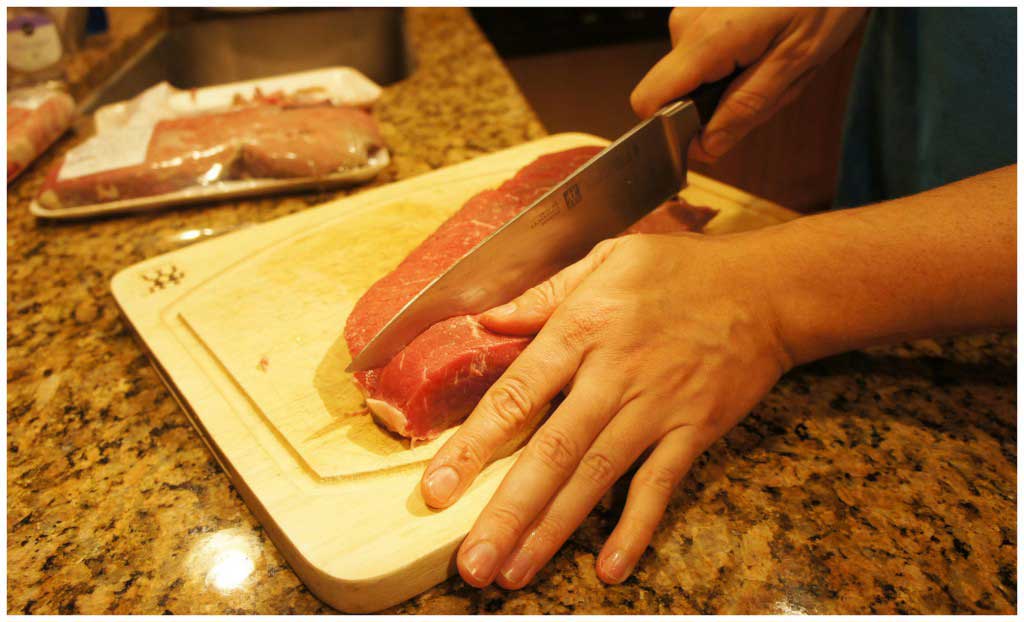
Your pile of meat should eventually look something like this:

Once your meat has been sliced, get out the vinegar and biltong spices. Traditional spice mixtures vary but are primarily made up of salt, pepper, and ground, roasted coriander. The important part of the mixture is the salt, which is necessary for the preservation of the meat. We tend to order pre-made spice combinations from Freddy Hirsh; a good source in North America is Out of Africa Trading in Canada.

Next, simply rinse the meat strips with vinegar and then coat them with the spice mixture. The vinegar, like the salt, is an important component to curing the meat; however, the type of vinegar (white, red wine or cider) and the amount used is totally a matter of taste. Once the meat has been thoroughly spiced, place it in the refrigerator to cure for anywhere from 5 to 24 hours; the longer you leave the meat, the saltier it will be.
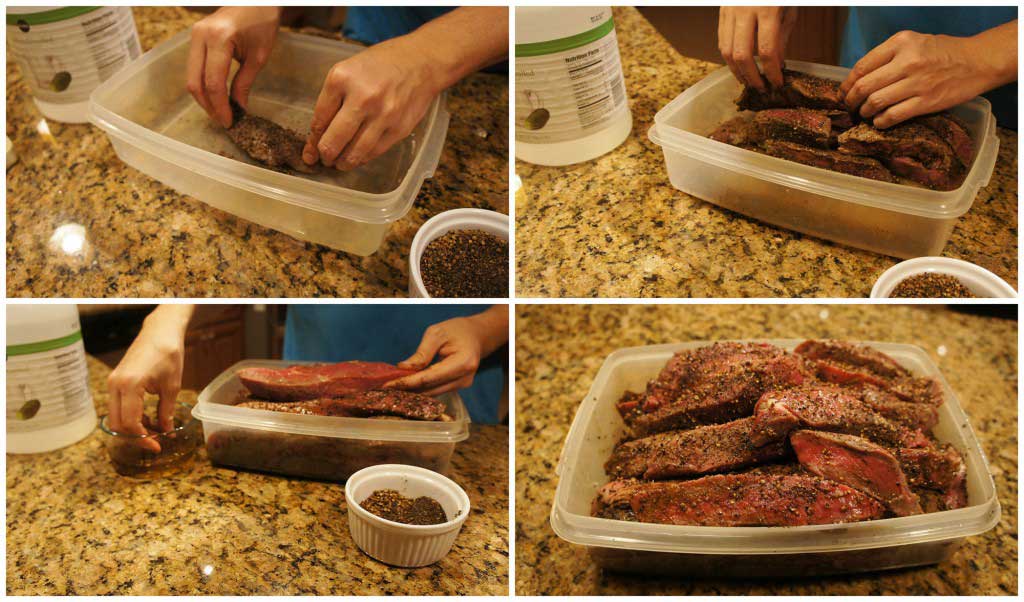
While your meat is resting, set up your dryer. You’ll need a well-ventilated area to hang the meat; air movement is a must to prevent mold from growing. (You can also add a teaspoon of baking soda to the spice mixture to prevent mold growth.) My father, who was bitten by the biltong bug on his trip to South Africa, created this little contraption for my husband. It includes a drip pan at the bottom (the strips will initially be very wet), ventilation holes, as well as a small fan at the top. In addition, we run a dehumidifier next to the dryer; this isn’t necessary, but it helps in humid environments.
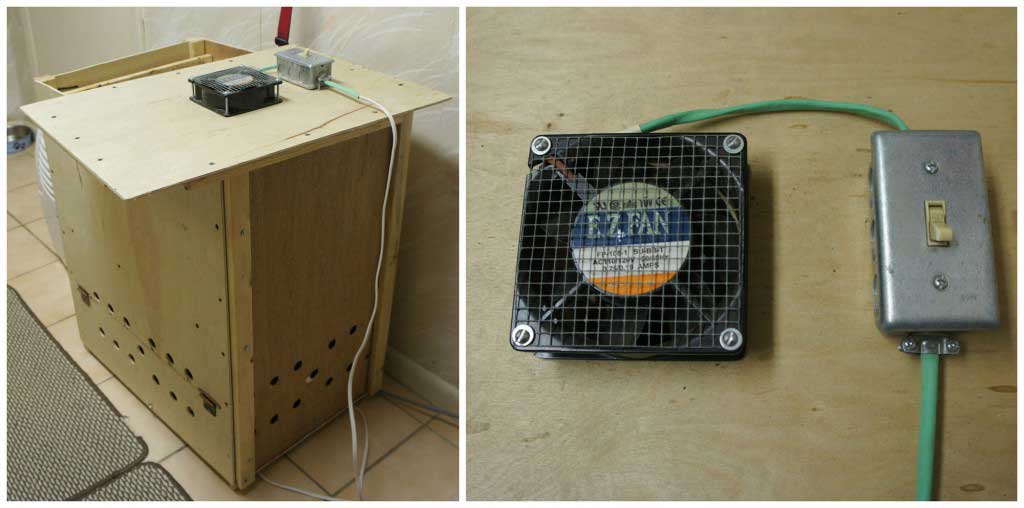
Once your meat has set for several hours, you’ll want to prepare it for hanging. You can use hooks, but we’ve found skewers to be much easier. Be sure to space the meat so that the strips do not touch when hanging.
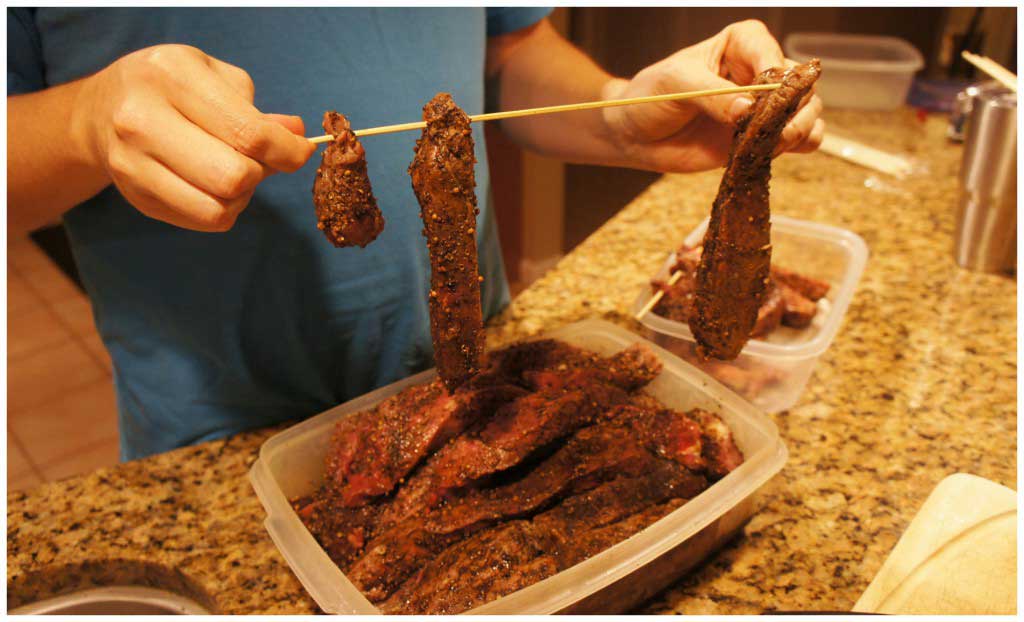
Now hang the meat inside the dryer, and turn on the fan. Watch out for wet noses! It’s a good idea to dry your meat where your four-legged friends can’t get to it.

You’ll want to keep your strips in the dryer for three to five days, depending on how wet you want the final product to be. Check the meat occasionally. If it’s too wet for your taste, keep it in the dryer for another day. I prefer fairly wet biltong; these strips are deep brown on the outside with some redness on the inside.
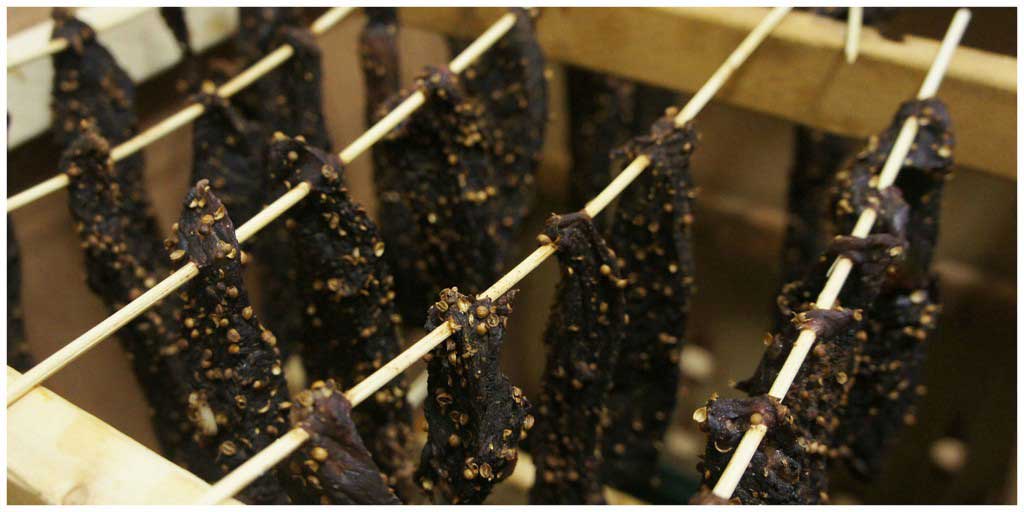
Once the meat has cured, you’ll have some good-looking stokkies (little sticks).
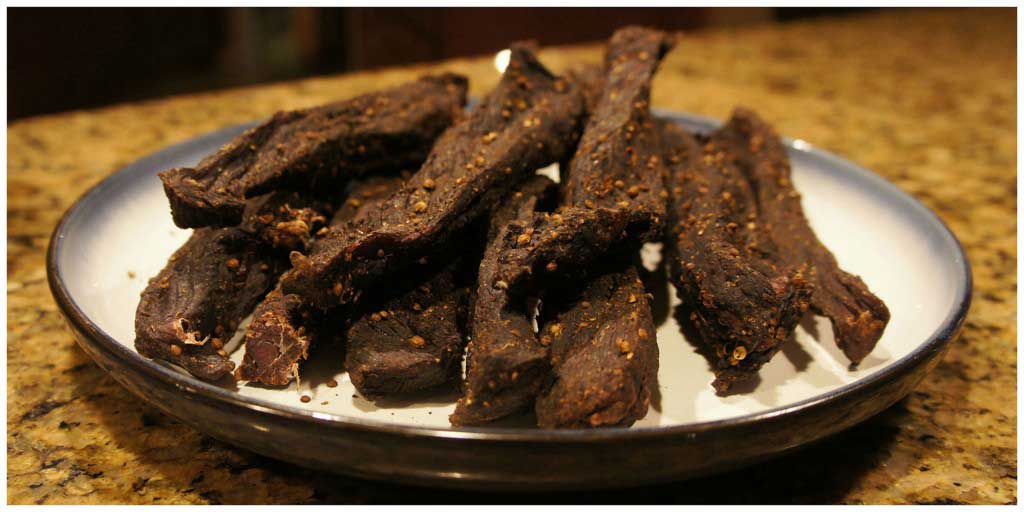
You can go right ahead and start gnawing on these sticks if you like or slice them into various thicknesses. I prefer a very thin cut, which we get by using one of the features on our food processor. Anything that is sliced too fine can always be sprinkled on soups, salads, or any other dish that could benefit from some biltong flavor (my husband would argue all of them).
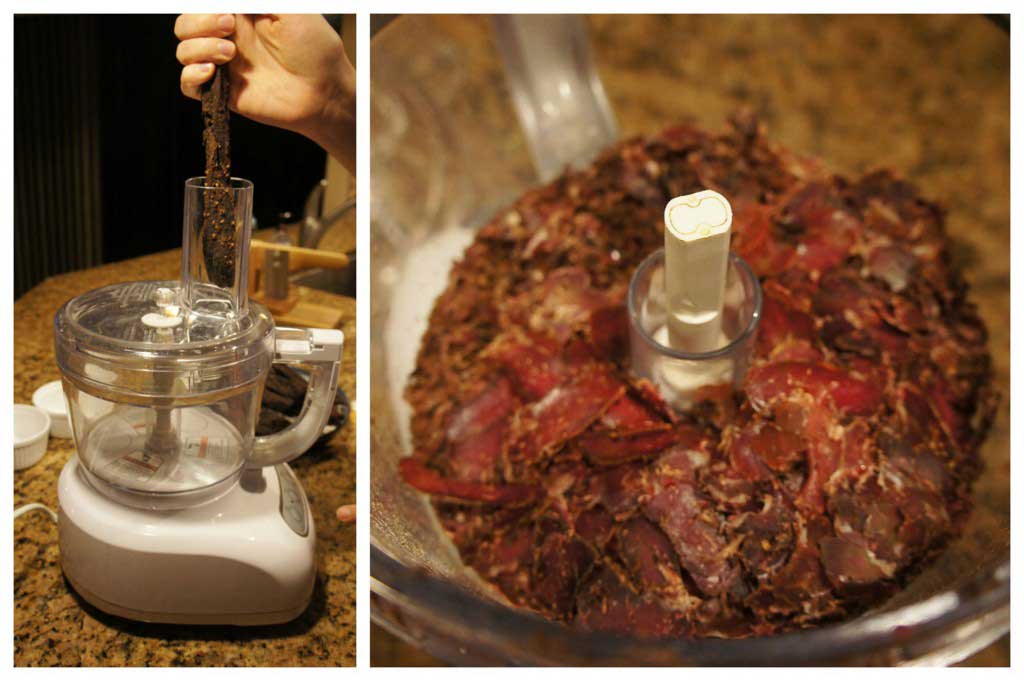
A traditional way to slice biltong at home is with this guillotine-like device. They can be pricey, but they’re totally worth it!
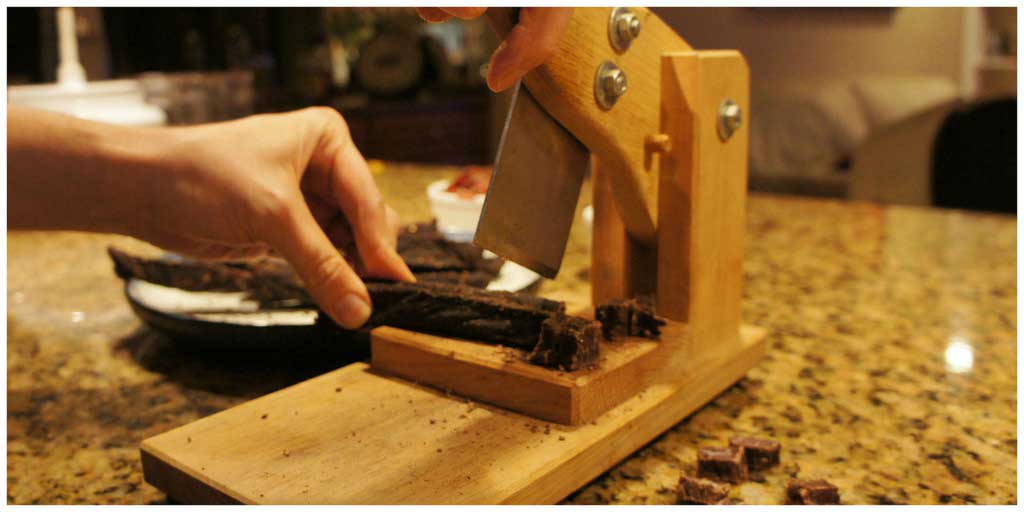
And that, ma bru, is how you make lekker biltong at home.
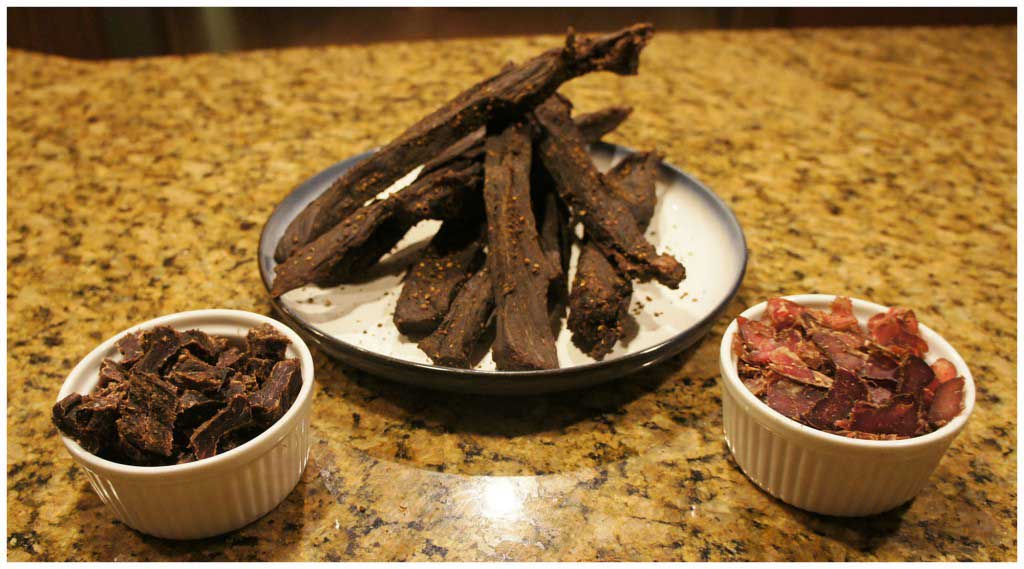
Have you made biltong at home? Anyone tried venison? We would love to hear from you!

